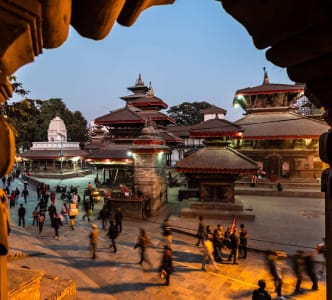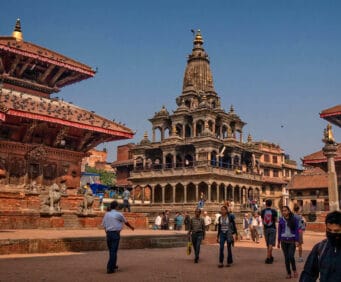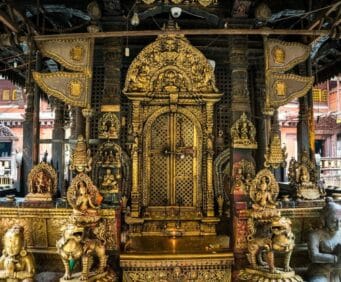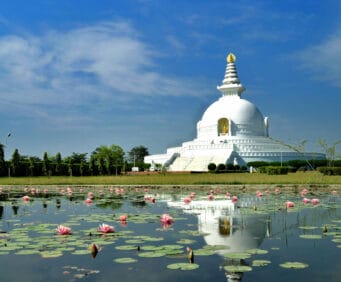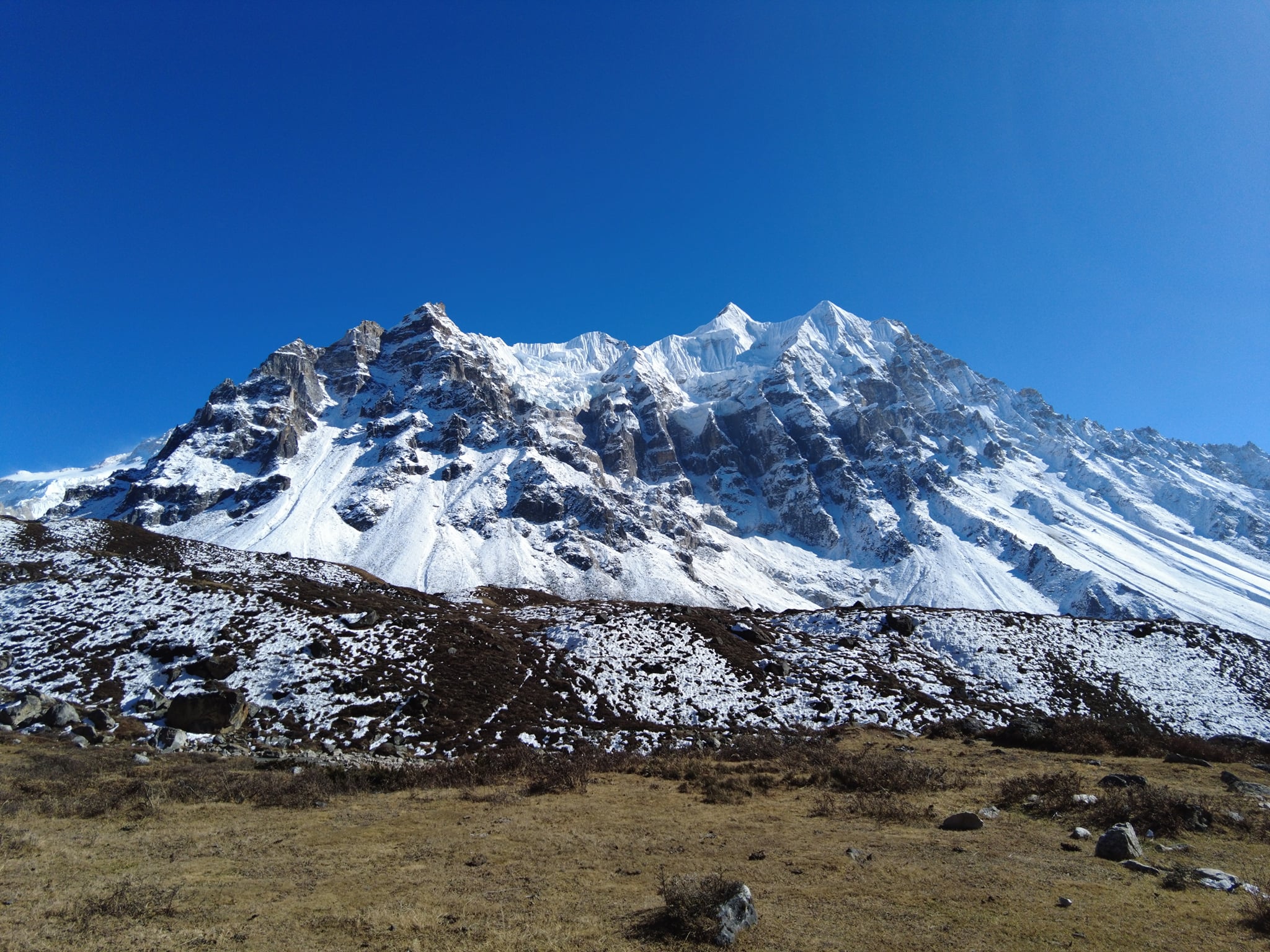
Kanchenjunga Trek Cost and Itinerary
25th August, 2024 - Posted By: Himalayan AbodeAre you prepared for a once-in-a-lifetime experience? Learn about the Kanchenjunga Trek Cost and Itinerary Come travel with us to the summit of Mount Kanchenjunga. Located in the extreme northeast of Nepal, the Kanchenjunga Trek is one of those treks that will provide you with an untouched experience you will not find in many other places.
This trip named Kanchenjunga Circuit Trek is around the third highest peak of the world, Mount Kanchenjunga which is 8,586 meters or 25,641 feet tall this trekking destination provides you a feeling of the world several decades ago when civilization was not much explored.
While other regions in Nepal have turned into commercial trekking attractiveness, the Kanchenjunga area remains as untouched as trekkers can imagine, which makes this journey rather demanding and unique for those in search of contact with wild nature.
A Journey to the Heart of the Himalayas
This trek, Kanchenjunga, is not for the weak-hearted people. This is a challenging and relatively long one that would take anywhere between ten days to a maximum of three weeks to cover.
The each segment of the trail passes through different terrains right from the low-altitude tropical vegetative cover to the high-altitude alpine tundra, moraines of the glaciers, and high barren lands. Every day in the trail is a day full of tasks to accomplish and what can be described as suffering till one reaches a pass, or suffer the steep climb or steep decline.
As part of this trek there is a chance to visit the North and the South base camp of Kanchenjunga. While the North Base Camp called Pangpema is establishing an outstanding view to the north face of Kanchenjunga, the South Base Camp opens the impressive view to the south side.
This also passes through the Kanchenjunga Conservation Area which is a bio-sphere area that consists of a mixed population of flora and fauna which includes snow leopards, red pandas, black bears and over two hundred species of birds.
A Case of Cultural Engagement in a Rural Area
But its not only the outer beauty of the Kanchenjunga region, it is also culturally more fortunate. This region consists of the Rai, Limbu, and Sherpa ethnic groups and the Tibetans among others. These people have remained organic with the land to this date maintaining their cultural and natural integrity. While hiking to various areas, you will get an opportunity to meet the villagers and discover how they live their daily lives as well as learn their customs and traditions.
However, you will get a warm reception from villagers in every village through which you pass. Regarding cultural experiences, they are considered to be one of the main highlights by many trekkers of the Kanchenjunga region.
It is quite likely that you may be welcomed to a local house for dinner, hot tea with butter or merely gossiped over a fire. Such moments bring insights into the area and the people thereby making the journey less only geographical but social as well.
Admit it; nothing thrills an explorer more than getting to understand the appropriate time to visit a certain destination as well as the experiences awaiting them there.
The best time to travel in the Kanchenjunga region
The most suitable seasons for trekking in the Kanchenjunga region are in the spring season that is during April and May as well as the autumn season in September and November. This is the season when the climate remains moderately calm, with a clear blue sky – a perfect backdrop for the gigantic mountains.
The Akagera is home to mammals such as the Lion, Giraffe, Elephant, Burchell’s zebra, Kudu, and the Roan Antelope as well as birds such as the Rwenzori Turaco, Striped Junco, Rwenzori Batis, Cinnamon-chested Sparrow, Ruwenzori Partridge, Archer’s Robin Chat, Strange weaver and many others. While the autumn brings a rather cold and even cool climate, it has an advantage in clear mountain sights.
Because the trek takes one into off‐the‐beaten‐track zones and into the altitudes, fitness plays a crucial role. This is a tea-house trek but there are not many teahouses compared to other areas like the Everest or Annapurna region, the services are comparatively humble.
There’ll be limited access to services and food and water so you have to fend for yourself or be ready to survive on the bare minimum. Trekkers should also know about altitude sickness since some parts of the trek are above 5000 meters. There is also extra caution while touring particularly when one is going to high altitudes, and it is mandatory to get used to the altitude changes.
Why Kanchenjunga Trek ?
The Kanchenjunga trek is apt for all those trekkers who want to avoid commercial tourists circumventing and enjoying the actual glory of the Himalayas. Unlike other trekking areas in Nepal, Danak Payech is little tough and striking that makes it different from other trekking destinations. Due to its location, the area remains rather isolated, which contributes to the creation of a rather peacefully beautiful panorama.
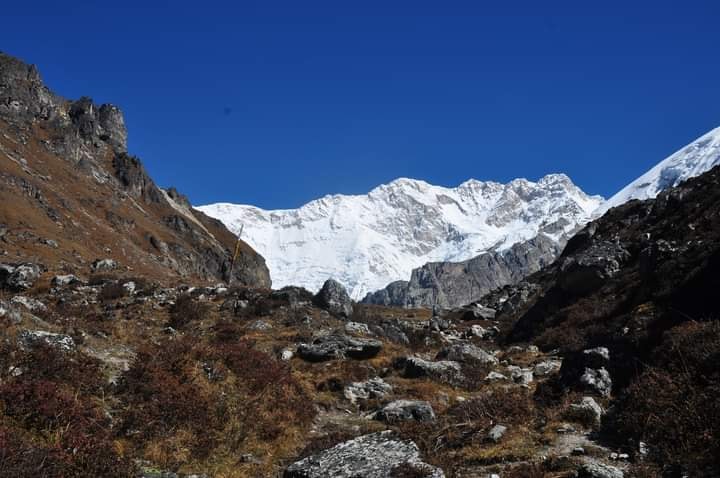
Where many trekking routes are gradually turning into excessively touristic, Kanchenjunga region is one of the few places that can be still considered as a territory for real enthusiasts, those who are looking for more natural and wild even in one of the most stunning places on the Earth.
Kanchenjunga Trek Cost and Itinerary
The Kanchenjunga Trek is not only a trek to the Himalayas but it is a trek to the natural beauty that still rules every corner of this world, and the simplicity of life found here will always leave an impression on your heart.
Dominated by the Kanchenjunga massif that is the world’s third and the planet’s most significant peak, the Kanchenjunga Trek is one of the most out-of-the-way treks in Nepal and one of the most enthralling treks in the region. As for those, who is willing to do this trek, the information about the price and the daily plan is the most important.
Below is the expense breakdown and the itinerary you must follow to plan this trip.
Trekking Cost /Expenses of the Kanchenjunga Region
The trekking cost of Kanchenjunga is further cumulative to its duration, choice between guided and self-trekking, the mode of accommodation that one opts for, and the time of the year. Here’s a general breakdown:
Trekking Permit Fees:
Restricted Area Permit: $20 per person per week through to the first four weeks of September- November, then $10 per person per week for the remaining part of the year.
Kanchenjunga Conservation Area Permit (KCAP): Two days’ wages for an NPR 3,000 ($25) worker.
Guide and Porter Costs:
Licensed Guide:
- Some employees had ranging from $35-$45 per day.
- Porter: $30–$35 per day.
Accommodation and Meals:
- Tea House/Guesthouse Accommodation: Up to $25 for basic lodging at each of the three different price ranges (USD).
- Meals: $25– $30 per day depending on location and availability of the car.
Transportation:
- Flights: Kathmandu to Bhadrapur $150–$250 one way only and Bhadrapur to Suketar if necessary.
- Overland Transport: Jeep fare from Bhadrapur to Taplejung (the starting point of the trek) will cost about $200
Other Costs:
- Travel Insurance (including high-altitude trekking coverage): More than $75 and below $200.
- Equipment Rental: It costs differently for different gears depending on the time anyone intends to hire the gear.
- Total Estimated Cost: The cost for Kanchenjunga Trek can average from $ 1800 to $ 3000 per head depending on the time, season, and appropriateness of the comfort for 20-25 days.
- This comprises of permits, guides, accommodation, meals, transport besides any other requirements that individuals may require during their trip.
- Accommodation and Fooding / Expenses of the day wise Kanchenjunga Trek
- The Kanchenjunga Trek by and large goes in a circuit around thanks to both the North Base Camp and the South Base Camp.
Kanchenjunga Trek Itinerary
Below is a typical 21-day itinerary for the trek:
Day 1: Arrival at Kathmandu which is at an altitude of 1400 meters.
Today they will arrive in Kathmandu, the capital city of Nepal also known as the ‘City of Temples’. Take the day in sorting out all the trekking details such as permits before the actual trek and also use it to tour some of the cultural attractions in the city. Overnight at a hotel.
Day 2: The second day of the flight from Kathmandu to Bhadrapur (91 minutes) we have to drive to Taplejung (1,820m).
Arrive at Kathmandu and fly to Bhadrapur in the eastern part of Nepal and then drive to Taplejung which is the beginning of the trek. Accommodation will be in a guesthouse in Taplejung.
Day 3: Taplejung to Mitlung – 8 hours 6 km – 921 meters
Start the trek with a downhill walking along the farm land where there is slope terraced fields and houses. The trail runs alongside the river till the town of Mitlung. Accommodation spending the night in a tea house.
Day 4: Mitlung to Chirwa (1,270m):
The trail goes on to better terrains and also pass through river and some young villages. Its members are from the Bisa, Luvale and other pockets of ethnic mix making Chirwa a lively village. Accommodation in a local tea house.
Day 5: Sekathum is located at the elevation of 1660m above sea level From Chirwa we were guided to Sekathum.The trail goes along the Ghunsa River and as you go higher and higher the vegetation and cultivated fields come into sight. Sekathum is a small village which is located which you will spend one night.
Day 6 : Sekathum – Amjiloza (2,510m).
For today’s trek some of them are ascending steeply through dense bamboo and rhododendron forests. You will get to the area called Amjilosa which is a small village situated in the highlands. Accommodation is spent in a tea house for the night.
Day 7 will be Amjilosa to Gyabla (2,730m).
Carry on with the hike through the wooded paths, and from time to time see some snowy mountains. The trail takes one to Gyabla that is a very small village of Tibet. Overnight accommodation will be in a tea house.
Day 8 – Gyabla to Ghunsa (3,595m)
Depending on the altitude, one will notice that there are changes that have occurred in the terrain all through. The trail leads you through very beautiful areas to Ghunsa, the larger Tibetan village or so it seemed to me. One must note that Ghunsa is a crucial acclimatization point. Accommodation overnight in a tea house company.
Day 9: in Ghunsa, it will be the ninth day of the climbing, and the tourists will have to carry out an acclimatization day.
Just spend the day, exploring the town and enjoying the beautiful scenery while the body adapts to thinner air. Spend some time in Ghunsa exploring the village and visiting a local monastery and do some short treks around the village. Accommodation usually is in a tea house.
Day 10: The day 10 of the trek involves the trekking from Ghunsa to Kambachen which is at an altitude of 4,050m.
It gets rocky during the higher and stony grounds after crossing the tree covered territories. As you ascend higher, glacier moraines emerge, and you find yourself surrounded by towering peaks Get to Kambachen where you will camp for the night.
Day 11: Kambachen to Lhonak – 4,780m – 5hrs 30 min
Today’s trek passes through rocky land and glacial streams and reaches Lhonak after the hike. From this point, it is possible to get quite stunning views of Kanchenjunga and other peaks. Sleep in a tea house.
Day 12: Lhonak to Pangpema 5143m – Today, of our Short Trekking in Nepal, the Himalayas, we are Moving From Lhonak to Pangpema and returning to Lhonak.
Wake up early ready for the last day trek to the North Base camp of Kanchenjunga – Pangpema. Take a glance of the picturesque outlook at the northern face of the mountain. In case of early snow, you have to spend some time at the base camp before trekking back to Lhonak. Accommodation at Tea House.
Day 13 : Lhonak to Ghunsa :
You will be following the same route back to Ghunsa and gradually come down to a comparatively lower elevation. Accommodation overnight in a tea house.
Day 14: Walk on day fourteen ending at Sele Le with an elevation of 4,290 meters above sea level.
The trail of the tea garden now goes towards the south of Kanchenjunga crossing high ridges. To Sele Le – A high mountain pass which is crossed through Rhododendron and Pine forest. Accommodation: Stay for the night in a tea house.
Day 15: Three new camping sites on the fifteen continued treks:
Sele Le to Tseram (3,870m)-Today cross several high passes Sinion La & Mirgin La and on the way Descend to Tseram. The view from the passes is amazing and one can get the feeling of mountain ranges touching the sky by seeing snow clad mountains all around. Accommodation of overnight in tea house.
Day16: Tseram to Ramche (4,580m) and Oktang the South Base Camp
This leads to Ramche and further to Oktang, which is the South Base Camp to this mountainous giant – Kanchenjunga. The members of the expedition have cited the following awesome views of reigning glaciers and the south face of the mountain. If the trek to Langtang Valley is planned in the next days then it is better if start trek back to Syabrubesi at Ramche only, to stay there for the night.
Day 17: Ramche to Torongding:
17km, 5 hrs, 980m up, 150m down Today walked distance with steep upscale and steep downscale in between hikes also.
Descend towards the lower altitude and move up and down through the forests and alpine meadows. Overnight at the different teahouses at Torongding.
Day 18: Torongding to Yamphudin at an elevation of 2,080m.
Carry on driving and driving down through pretty countryside and terraced farming areas down to the village of Yamphudin – a Sherpa village. Accommodation at the overnight in the tea house.
Day 19: Yamphudin to Khebang (1,910m)
The trail increases gently and passes through the forests and the small villages. Overnight in a tea house at Khebang.
Day 20: Trek from Khebang to Taplejung (1,820m)
It is still 5-6-day trek back to Taplejung which will make a complete round of the Kanchenjunga trek. When you are done with your travel and your itinerary, you can relax and spend the night at a guest house of your choice.
Day 21-Taplejung/Bhadrapur
By vehicle- Taplejung to Bhadrapur and Bhadrapur to Kathmandu by Air.
Return to Bhadrapur and fly to the Capital City of Nepal, Kathmandu. The following day take time to rest in Kathmandu and contemplate over the splendid adventure in the Himalayas that you’ve just completed. Overnight at a hotel.
Conclusion:
The Kanchenjunga Trek is a great adventure for those, who look for a isolated and rigorous trekking in the Himalayas. If well planned and prepared for this trek will offer some of the best viewpoints and cultural interaction in the country.
The memories of the beautiful mountains of Kanchenjunga, the virgin lands of the area, and the possibility of walking along the unknown, the most secluded track – all these things are waiting for you on this trek.
Recent Posts
